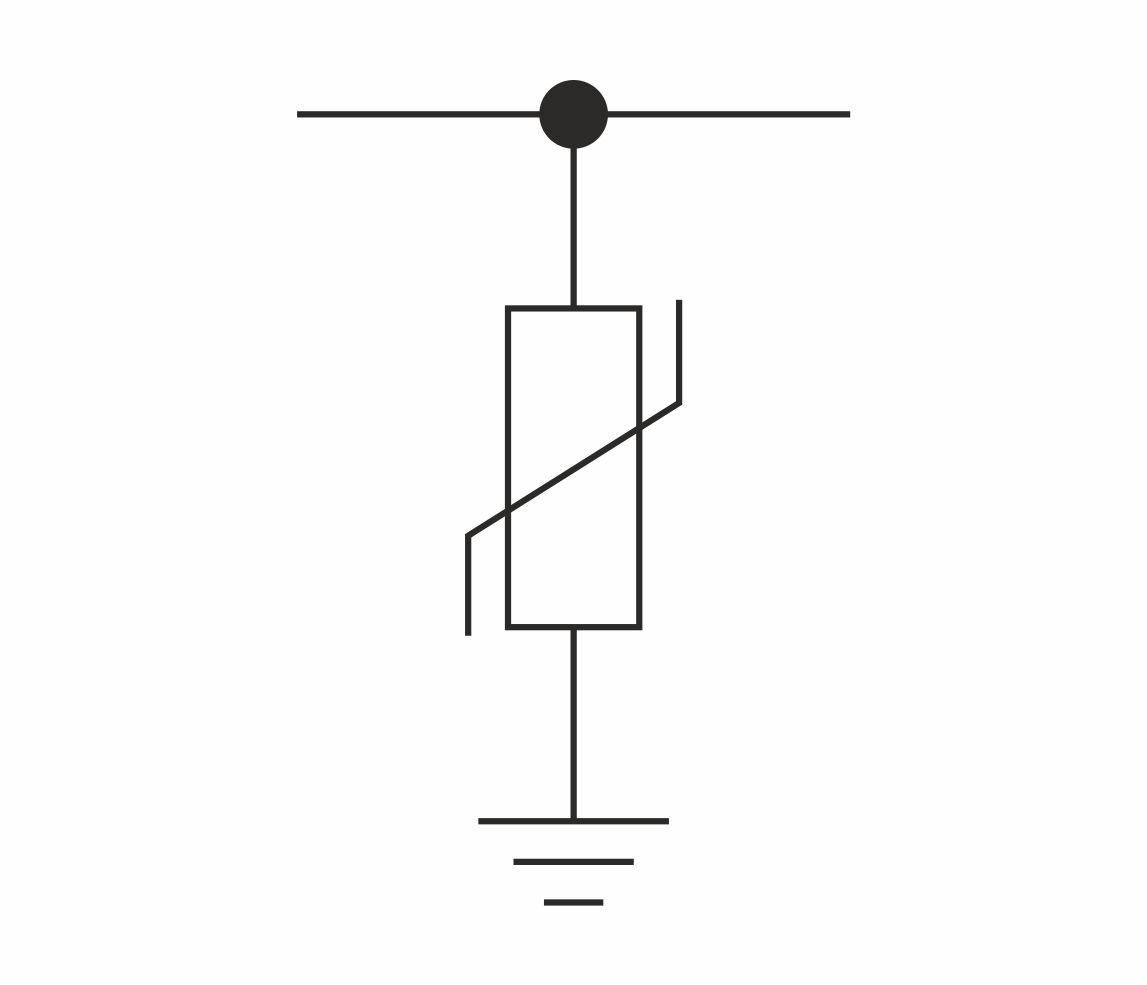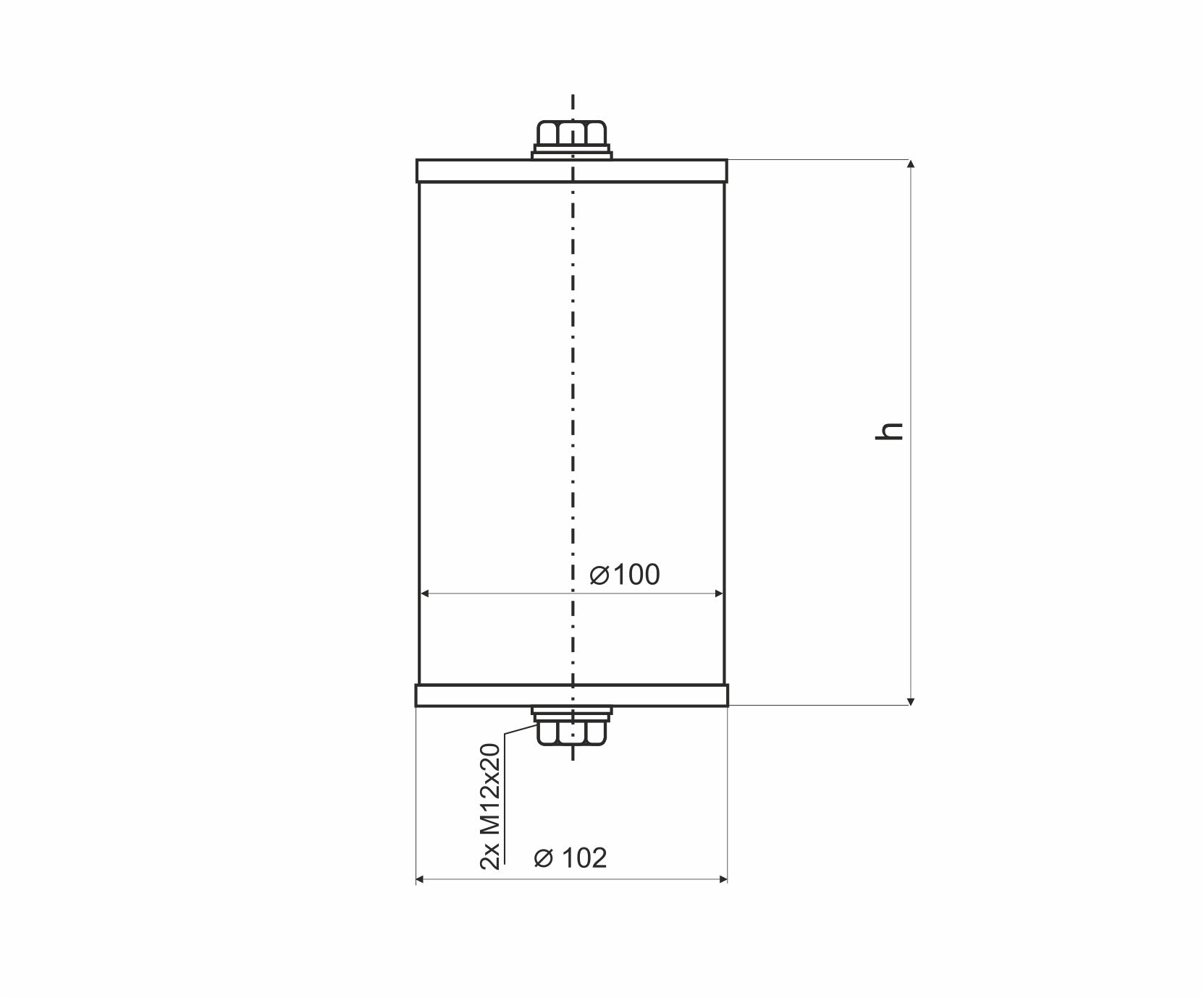Surge arrester PSPI */10/III
PSPI */10/III
line discharge class 3
indoor use
PSPI */10/III - overvoltage limiters designed to protect converter stations and DC systems of electric traction systems linked to them from the effects of atmospheric and switching overvoltage. They are used for protecting traction lines, electrical equipment of trolleybuses, trams and electric trains. They do not require any maintenance during their operation. The PSPI */10/III series is intended for indoor applications. The functional part of the limiters consists of a column of varistors sized for continuous operating voltage Uc. The outer insulating shell is composed from silicon material (grey colour). The material of the shell shows high resistance to the effects of surface leakage currents and to electric arc, possesses hydrophobic properties and shows excellent resistance to weather effects, pollution and UV radiation. The cover caps, connecting screws, nuts and terminals are made of stainless steel. With their design and technical parameters, the overvoltage limiters of the PSPI series conform to the standards EN 60099-4: 2014, IEC 60099-4: 2014 and EN 50526-1: 2012.
| Type | PSPI 1/10/III | PSPI 2/10/III | PSPI 3/10/III | PSPI 4/10/III | PSPI 5/10/III | PSPI 6/10/III | |
|---|---|---|---|---|---|---|---|
| Continuous operating voltage (DC) UC(= Ur) * | 1,25 kV | 2,5 kV | 3,75 kV | 4,2 kV | 5,5 kV | 6,7 kV | |
| Nominal discharge current | In | 10 kA | 10 kA | 10 kA | 10 kA | 10 kA | 10 kA |
| Use in power net | 600/750 V | 1500 V | special application |
3000 V | special application |
special application |
|
| High impulse current (4/10) | 2 x 100 kA | 2 x 100 kA | 2 x 100 kA | 2 x 100 kA | 2 x 100 kA | 2 x 100 kA | |
| Long current impulse (2 ms) | 850 A | 850 A | 850 A | 850 A | 850 A | 850 A | |
| Discharge class acc. to EN 60099-4 | 3 | 3 | 3 | 3 | 3 | 3 | |
| Residual voltage at In | Ures | ≤ 3,5 kV | ≤ 7 kV | ≤ 10,5 kV | ≤ 10,7 kV | ≤ 14,2 kV | ≤ 17,7 kV |
| Height | h | 83 mm | 88 mm | 106 mm | 115 mm | 123 mm | 125 mm |
| Operating temperature range | - 40 °C ÷ + 55 °C | ||||||
| Protection type | IP62 | ||||||
| Weight | m | 1,5 kg | 1,6 kg | 1,9 kg | 2,1 kg | 2,3 kg | 2,6 kg |
| Article number | 94001 | 94003 | 94006 | 94002 | 94004 | 94005 | |
* The rated voltage Ur of the arrester coincides with the continuous operating voltage Uc.
Note: The height and weight are indicative only and may vary. We can send accurate dat.
Application possibilities
Electronic systems are more and more sensitive to increasing electromagnetic smog, which can cause interference, system failure or even destruction of the system. It is therefore necessary to use overvoltage protection devices. Direct current traction grids never used to be used as distribution systems but recently there has been an increase in their use for powering various devices in the vicinity of trolleybus and tram tracks, such as switch points, ticket vending machines, cameras, lighting for tram stops, public address systems, security equipment, and the heating of switch points etc. The powering of these devices has always been a problem in respect of transient and switching phenomena, which can be caused by voltage peaks in distribution lines. With DC traction grids the equipment is also influenced by the use of AC/DC traction, and possibly also by the control of transformers with IGBT transistors.
Atmospheric overvoltage
Direct or indirect lightning strike on traction lines, substation buildings, the HV lines of powering substations. Induction onto traction devices.
Switching overvoltage and overvoltage from man-made sources
• crossing dividers (even under power)
• recuperation (braking under the divider), short, but intensive energy peaks
• recuperation and crossing dividers between substations (the most critical case)
• switching of sections in substations
• occurrence of overvoltage in rectifiers and its effect on substations
Advantages
• Long protective distance
• High absorption capacity
• Stable U-I characteristics even after repeated discharges
• Resistance to ageing
• Design resistant to explosion and bursting
• Resistance to pollution and UV radiation
• Resistance of the shell to rough handling
• Maintenance-free design
• Resistance to shocks and vibrations
• High mechanical resistance
Transport and storage
The overvoltage limiters may not be exposed to strong shocks and impacts during transport. They should be stored in the long term in an indoor store.
Maintenance
No testing of the function or maintenance such as cleaning is necessary during the anticipated life of the limiter.





